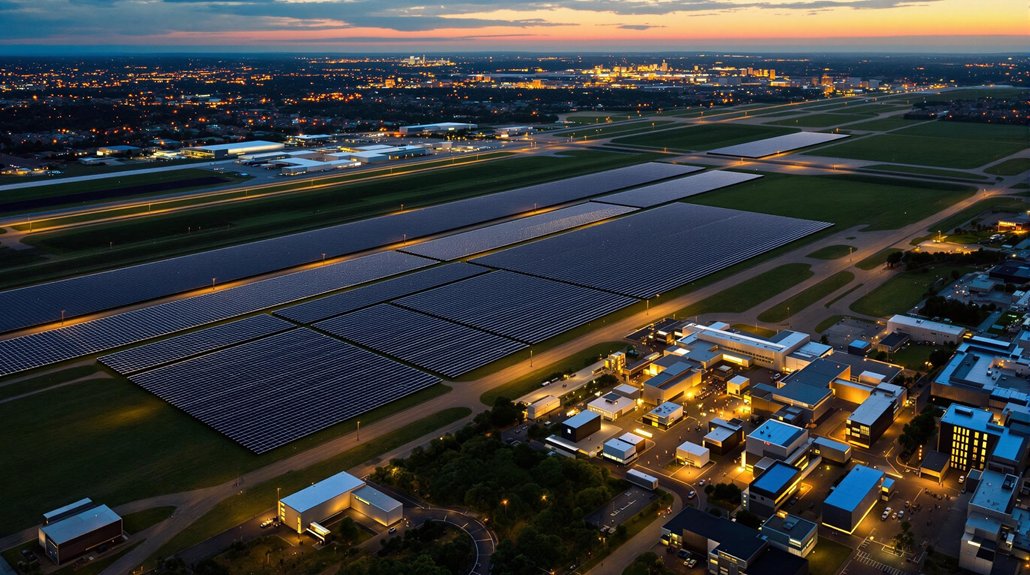Pittsburgh International Airport has operated on its own microgrid since 2021, preventing blackouts like Heathrow’s recent disaster. The system combines natural gas generators with solar panels to produce 20 megawatts of electricity. It saves $1 million yearly and has maintained service during severe weather events. Other airports, including JFK and Houston’s George Bush, are now following Pittsburgh’s blueprint for energy independence. This innovation marks just the beginning of America’s airport power transformation.
While major airports worldwide search for ways to become more efficient, Pittsburgh International Airport has quietly led an energy transformation. Since July 2021, it’s been the world’s first airport fully powered by its own microgrid. This unique power system has made the airport immune to the kind of massive blackouts that recently crippled London’s Heathrow Airport.
Pittsburgh International Airport has pioneered energy independence, becoming the first airport worldwide to operate entirely on its own microgrid system.
The Pittsburgh microgrid can generate 20 megawatts of electricity, enough to power more than 13,000 homes. It combines five natural gas generators with 9,360 solar panels spread across eight acres near the airport. The natural gas comes from wells right on airport property, tapping into the Marcellus Shale formation below. This innovative approach reflects the airport’s commitment to sustainable airport operations while maintaining energy independence.
When power goes out elsewhere, Pittsburgh’s airport keeps running. The system can operate in “island mode,” completely disconnected from the regional power grid. It’s already proven itself during an ice storm and other grid disruptions. The microgrid simply worked as designed. The project was recognized for its innovation in airport safety and reliability, enhancing operations for the facility that serves over 9 million passengers annually.
The $30 million project didn’t cost the airport authority anything. Peoples Natural Gas built and operates the system under a 20-year contract. The airport saves about $1 million in energy costs each year. CNX Resources provides the natural gas, while IMG Energy Solutions runs the solar facility. The system provides grid stability by balancing intermittent renewable energy with more consistent natural gas generation.
Other airports have taken notice. Houston’s George Bush Airport is exploring a similar system, and JFK Airport in New York plans an 11-megawatt microgrid for its new terminal. The Pittsburgh model shows how airports can become more self-sufficient and resilient.
The solar panels can provide up to 13% of the airport’s peak power needs. There are already permits to double the solar capacity in the future.
The microgrid is part of Pittsburgh’s larger $1.39 billion terminal modernization program, with a new terminal set to open in 2025.









